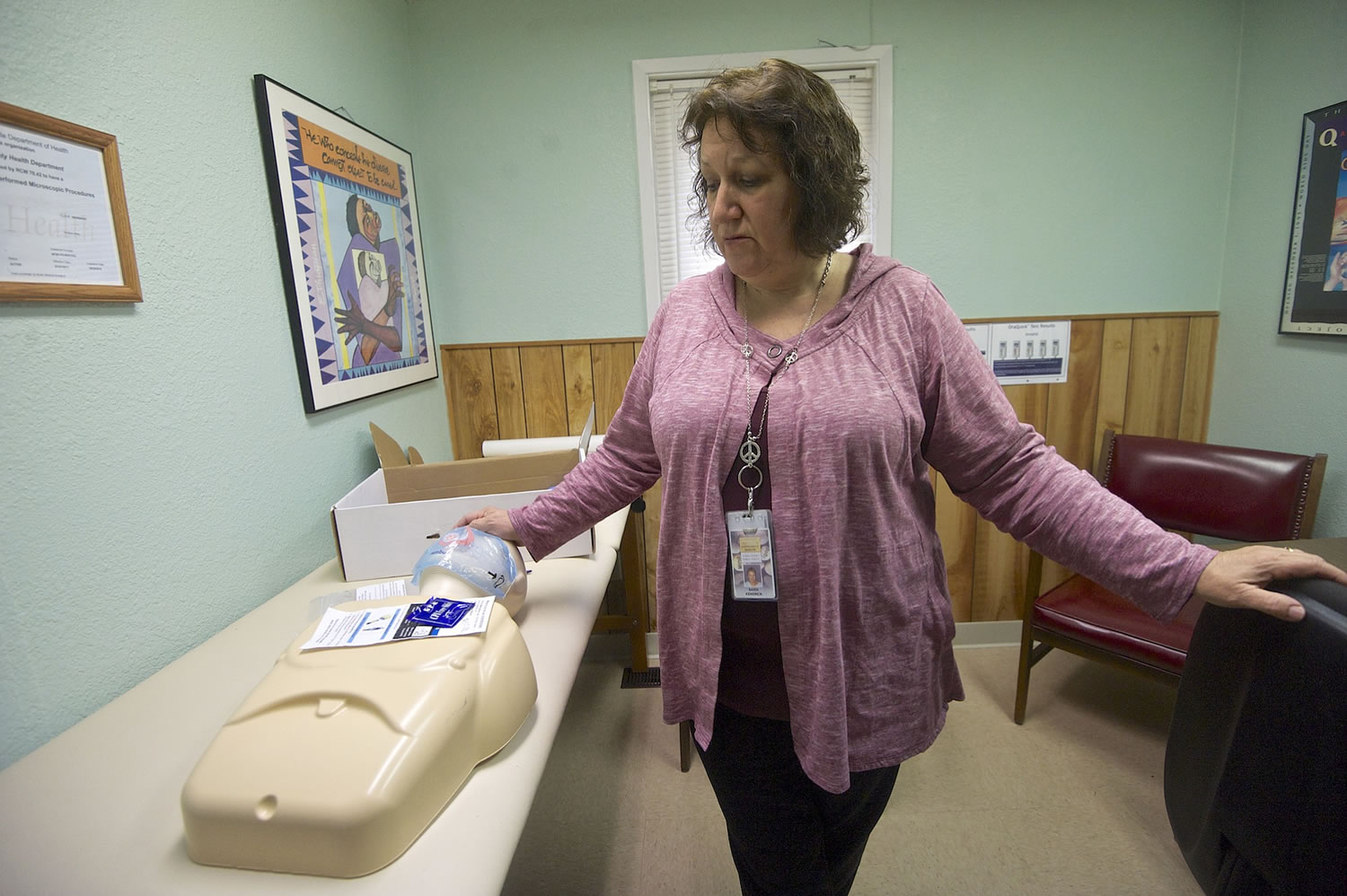In 12 months, Clark County Public Health’s needle exchange program has collected 1.2 million dirty syringes and handed out nearly 1 million clean needles to drug users.
The program, health officials said, is keeping drug users’ dirty needles off the streets and out of parks and driving down infectious disease rates in the community.
“We’ve made a difference, and we’ve got great outcomes,” said Sandi Kendrick, a public health educator who runs the exchange program. “It saves lives.”
Clients come into the discreet, cream-colored building on East Fourth Plain Boulevard and hand over plastic jugs full of used needles. A 20-pound cat litter jug can hold 500 syringes. A laundry detergent bottle holds about 100 needles.
Each client has an exchange code — a combination of letters and numbers from their name, mother’s name and birthdate — they use to anonymously exchange their used needles for clean ones.
In addition to clean needles, clients can get clean alcohol wipes, cookers, cottons, condoms and abscess care kits. Clients can also get a free, confidential hepatitis C test with results in just 20 minutes and hepatitis A and B vaccines.
While the program has been successful in reducing the HIV rate among the population who injects drugs — the rate has plummeted statewide in the last decade — the growing number of people using heroin, many of whom previously abused prescription drugs, has caused the needle exchange client numbers to soar, said Adiba Ali, an epidemiologist with Clark County Public Health.
In 12 months, the exchange program had 1,500 clients who made 6,000 visits — all in just eight hours per week. That’s roughly double the program’s client load from five years earlier, Ali said.
With HIV rates declining, the Washington Department of Health, which funds the local exchange programs, has shifted its emphasis to reducing hepatitis C rates, Ali said. Those rates have been climbing, partly because of increased testing, she said.
In addition to hepatitis C tests and drug supplies, staff also provide education on how to prevent the spread of infectious diseases and encourage clients to use needles only once and to not share their needles.
Staff also offer overdose prevention education, highlighting how to avoid overdoses, signs of overdose and how to help someone who is overdosing. A two-year, $20,000 grant from the Syringe Access Fund has enabled the program to begin offering naloxone, an injectable drug used to reverse the effects of opiate overdose.
The program gives naloxone kits to clients and family members of drug users after they go through a 15-minute training on how to use the drug. Naloxone is a prescription drug, and, unlike with the needle exchange, the program requires clients to provide their names in order to get the drug.
Each naloxone kit contains supplies to administer two doses of naloxone: two syringes, two vials of naloxone, two pairs of gloves, alcohol wipes, a rescue breathing mask and instructions. When clients come back for refills, staff gathers information about the situations in which the kits were used.
Since the program began in late April, they’ve handed out 240 kits and have recorded about 50 overdose reversals, Kendrick said.
“Some people have used it the next day,” Kendrick said. “It’s the ultimate harm reduction.”
Staff use the experience as an opportunity to discuss treatment and recovery. Clients who have used the naloxone to save an overdosing friend are sometimes more open to getting clean themselves, Kendrick said.
“People are really empowered by saving people’s lives,” she said.
Research has also shown that people who access syringe exchange programs are more likely to undergo treatment and more likely to be successful in treatment, Kendrick said.
“It really makes our community healthier because we’re educating them and empowering them to make healthier choices,” Kendrick said.




